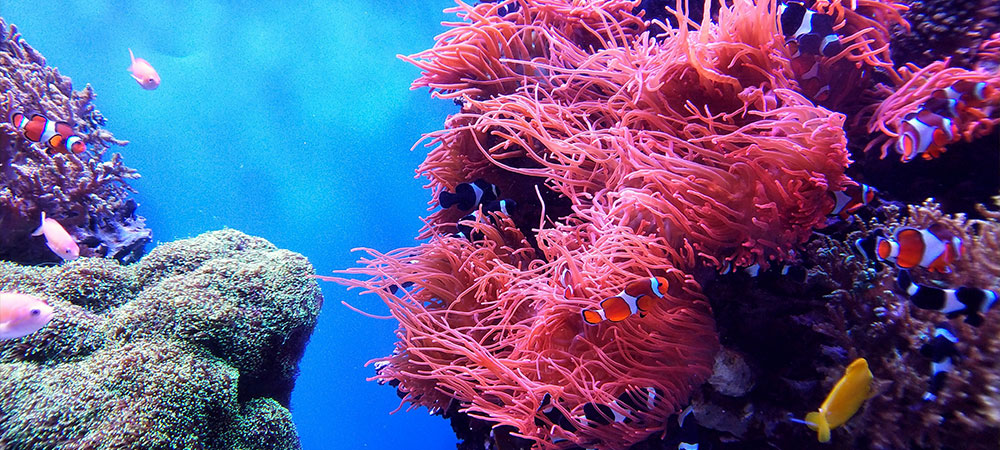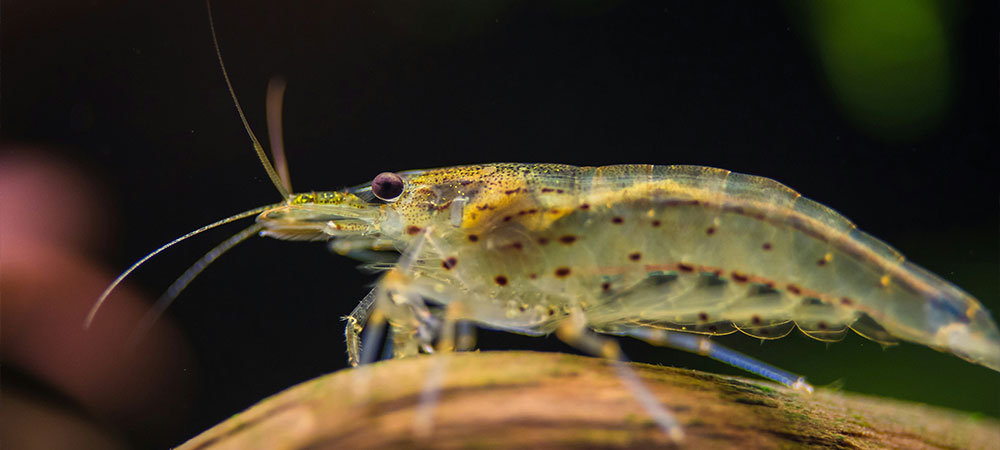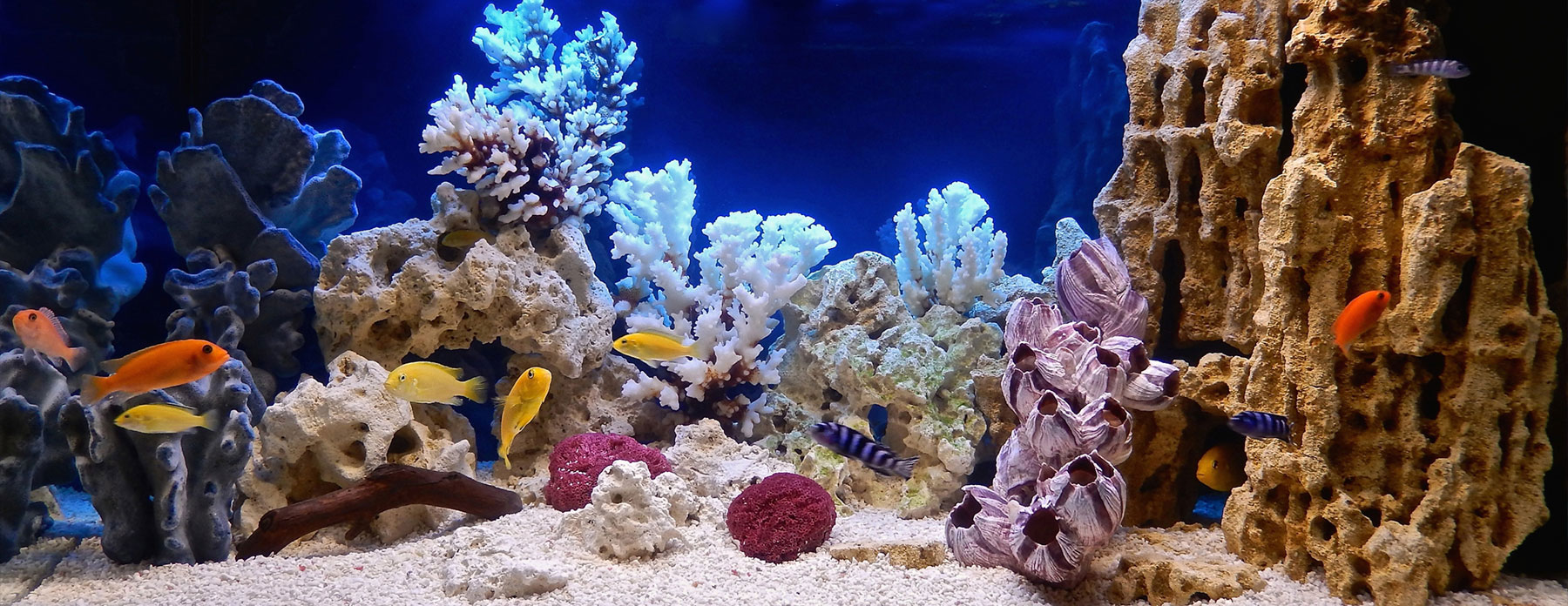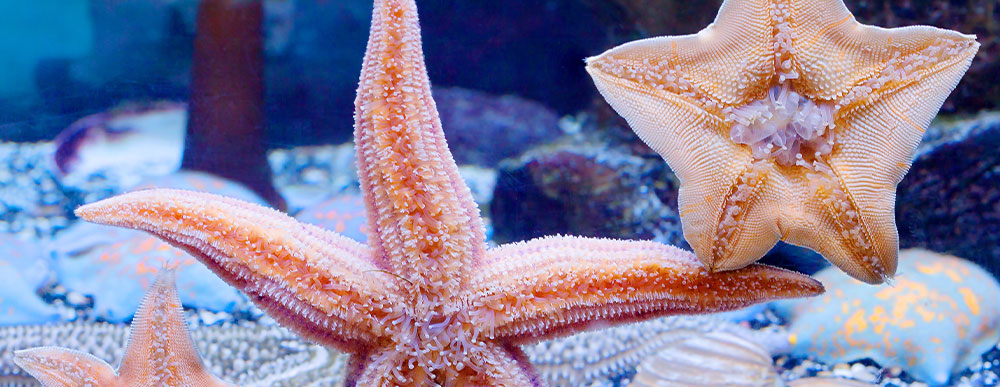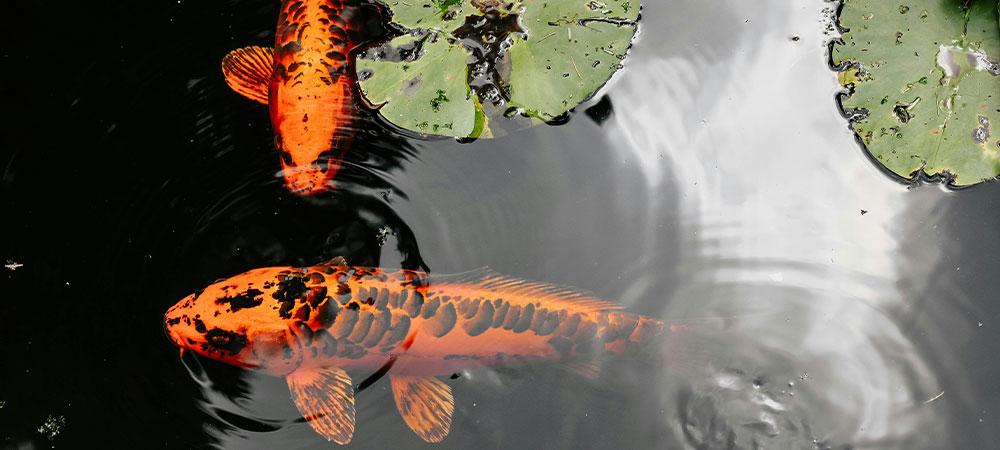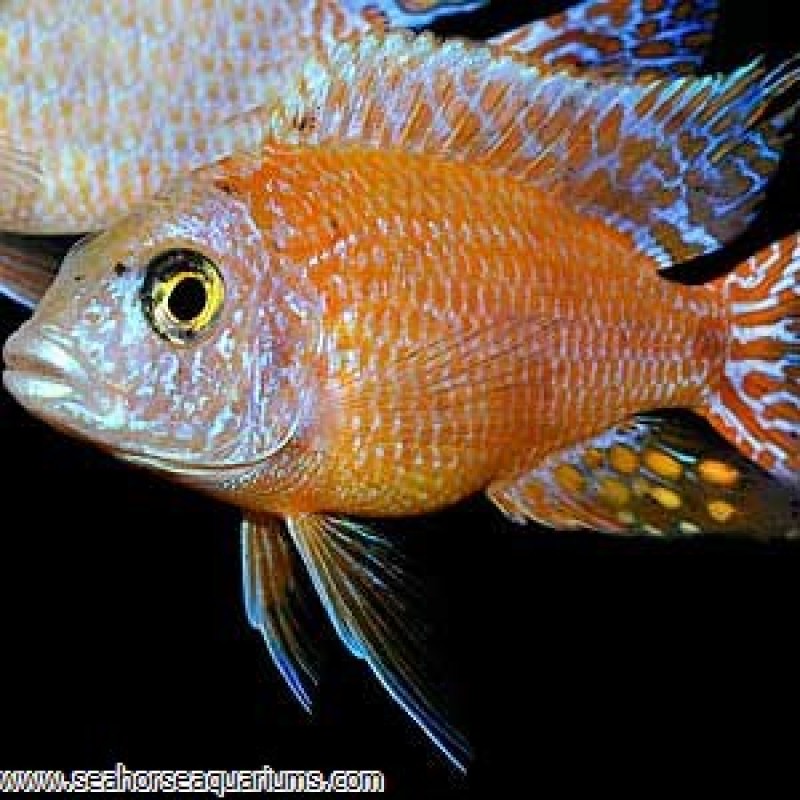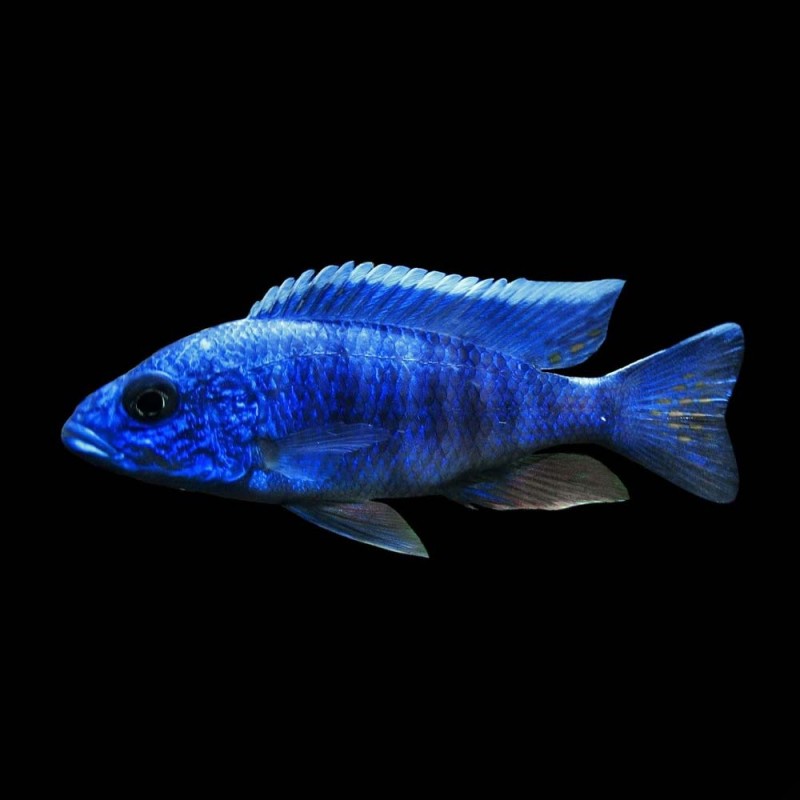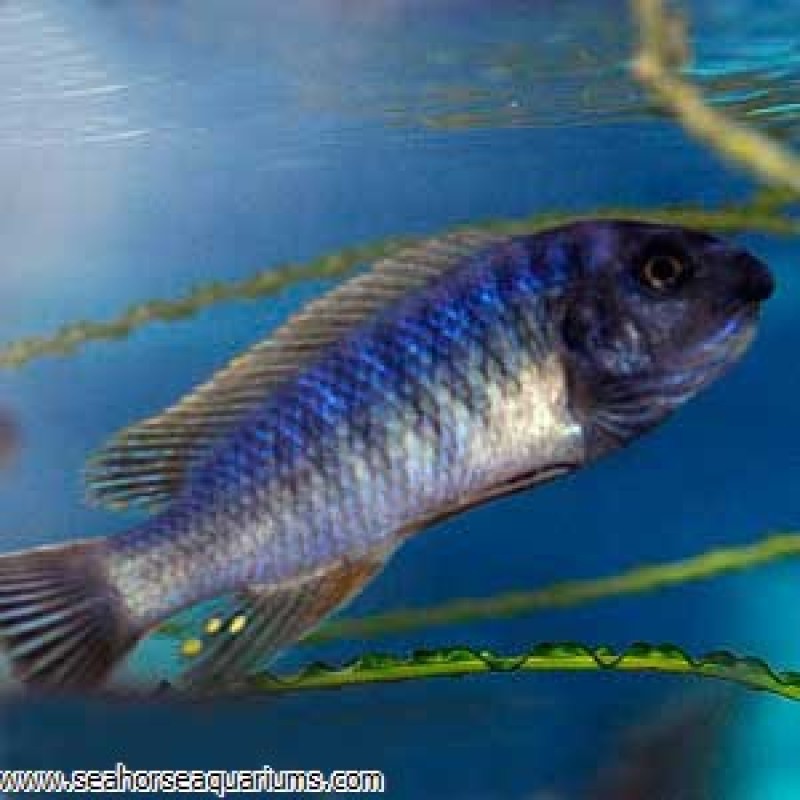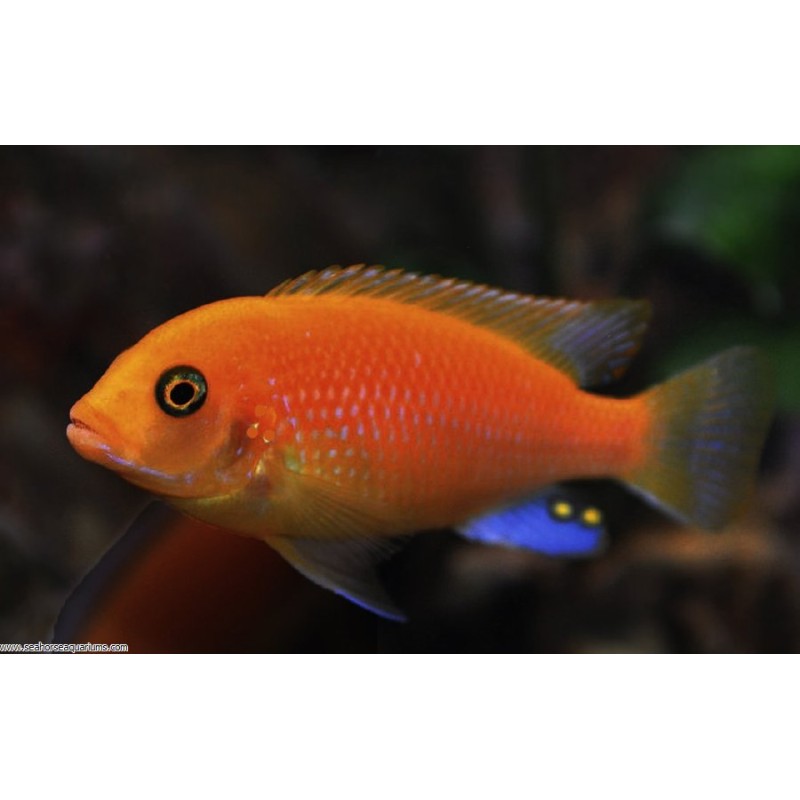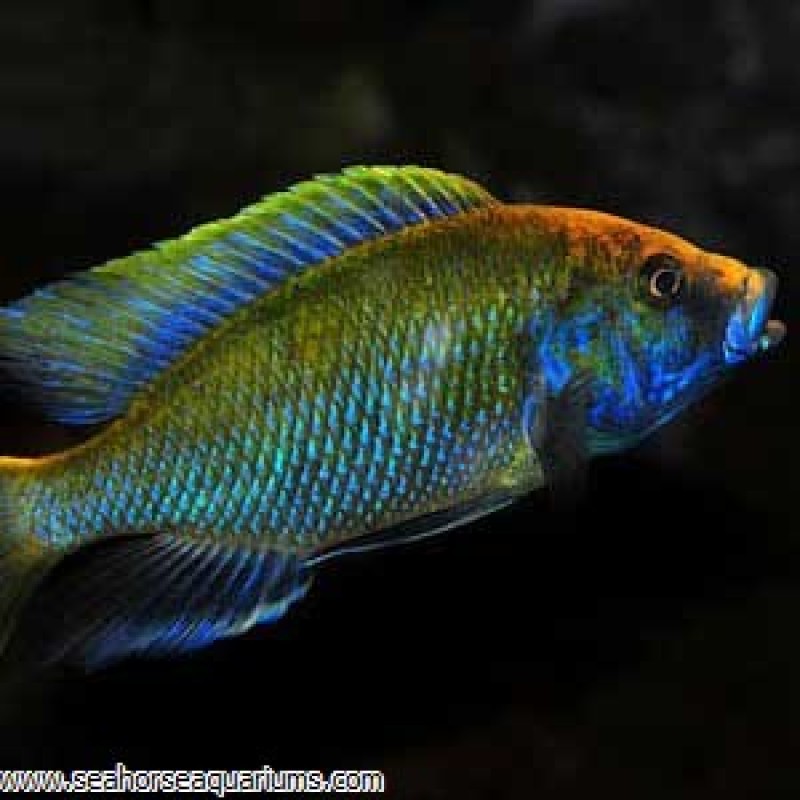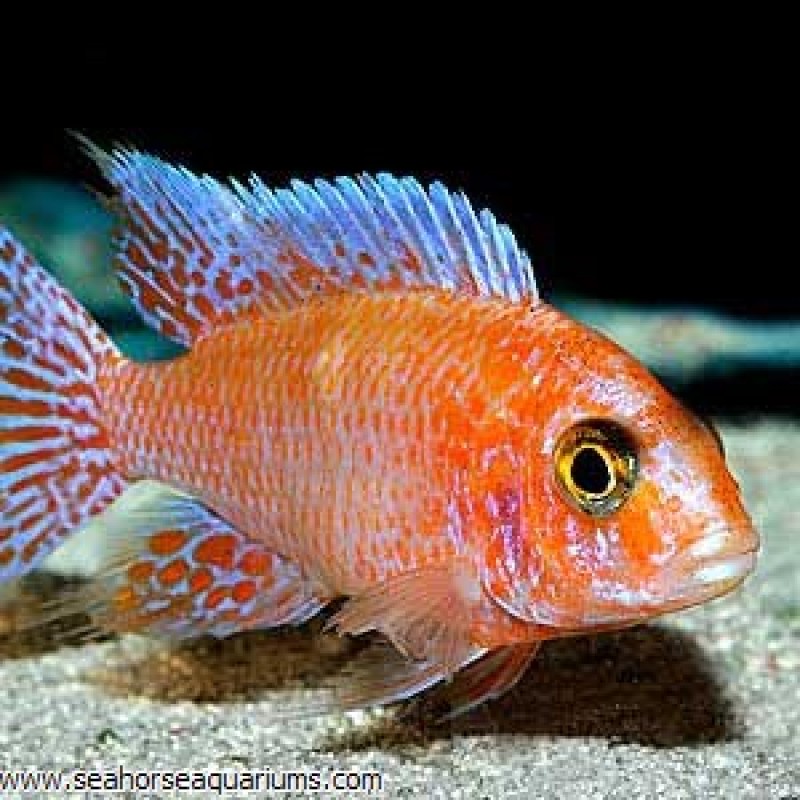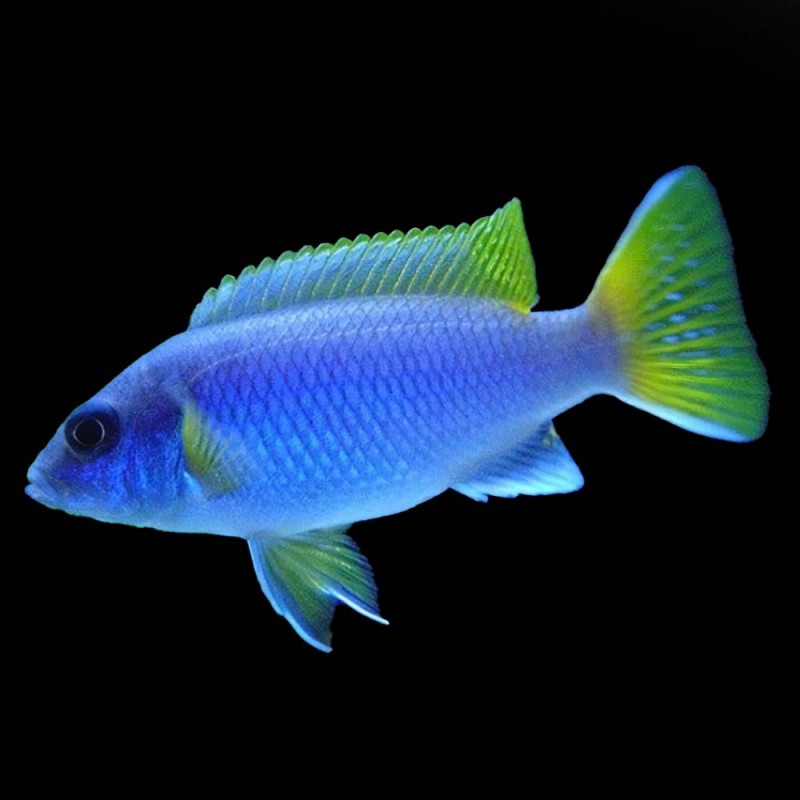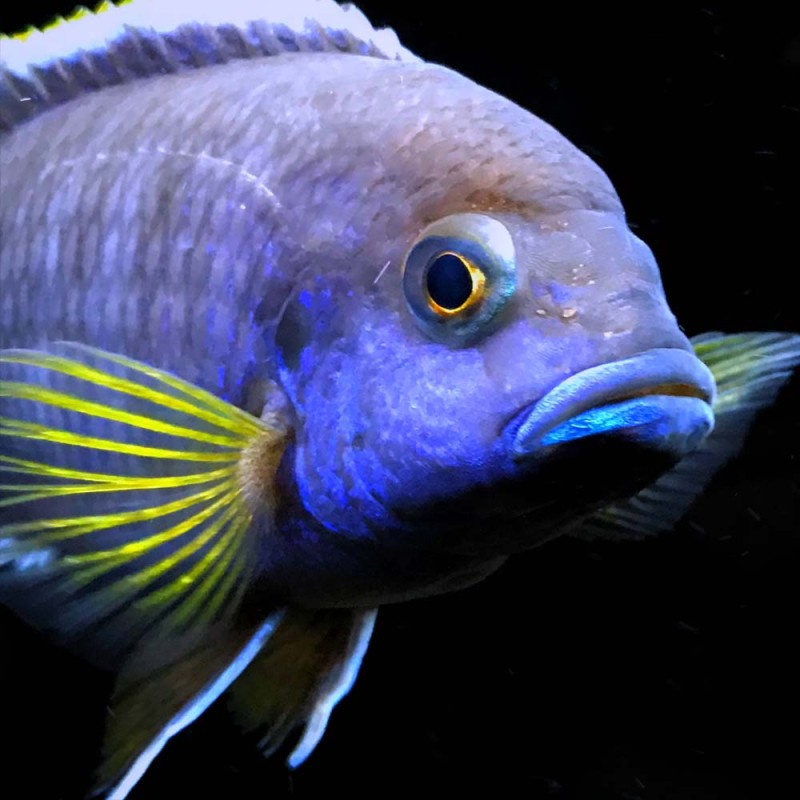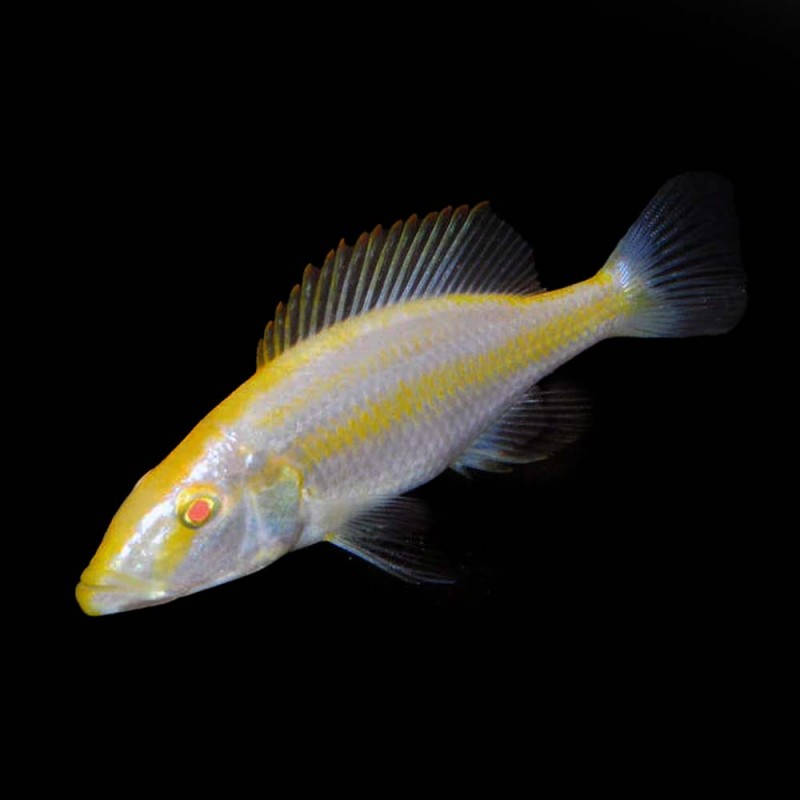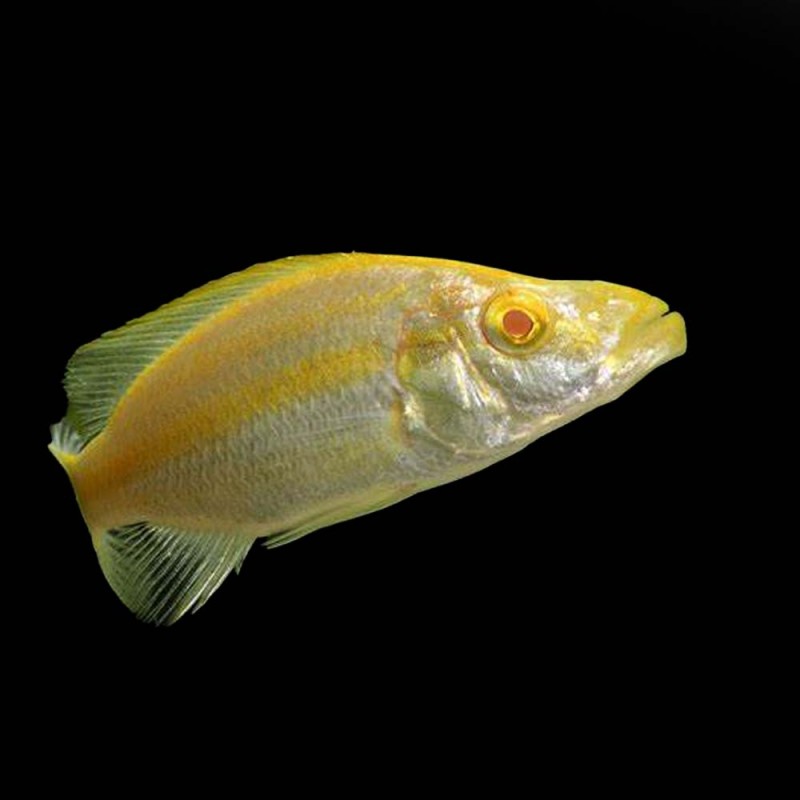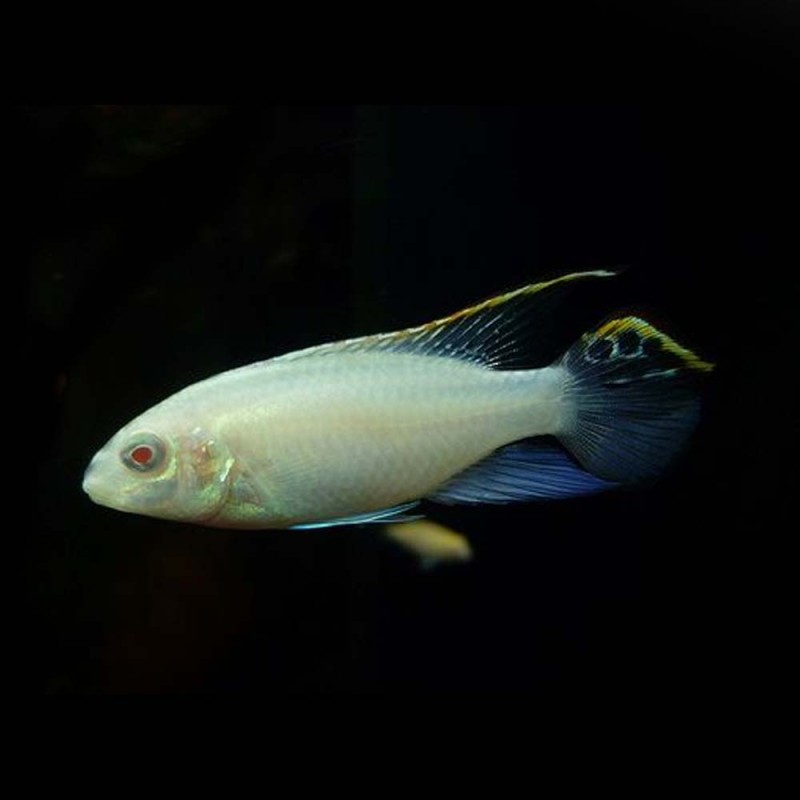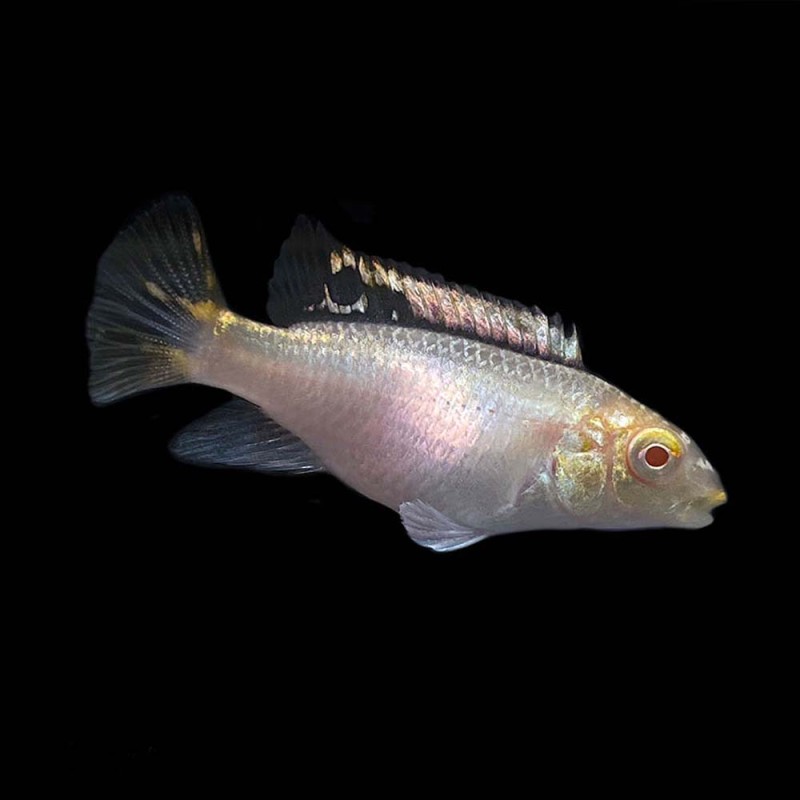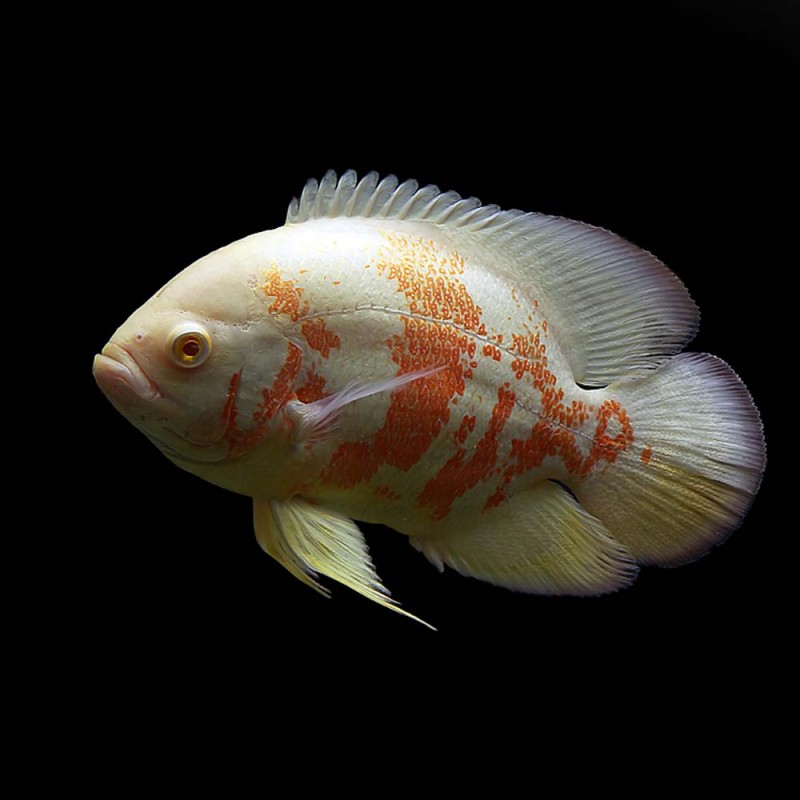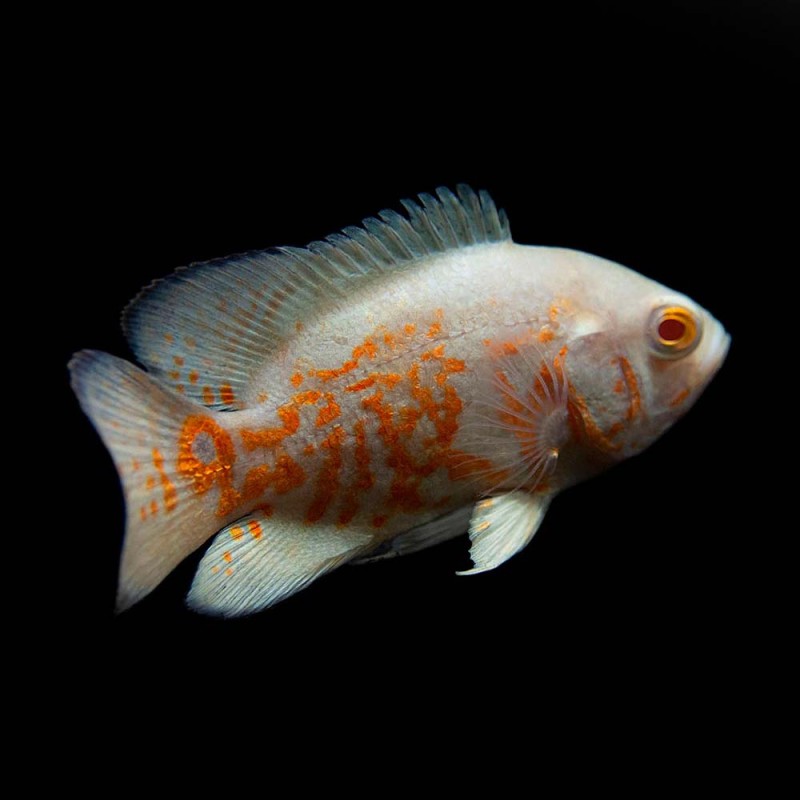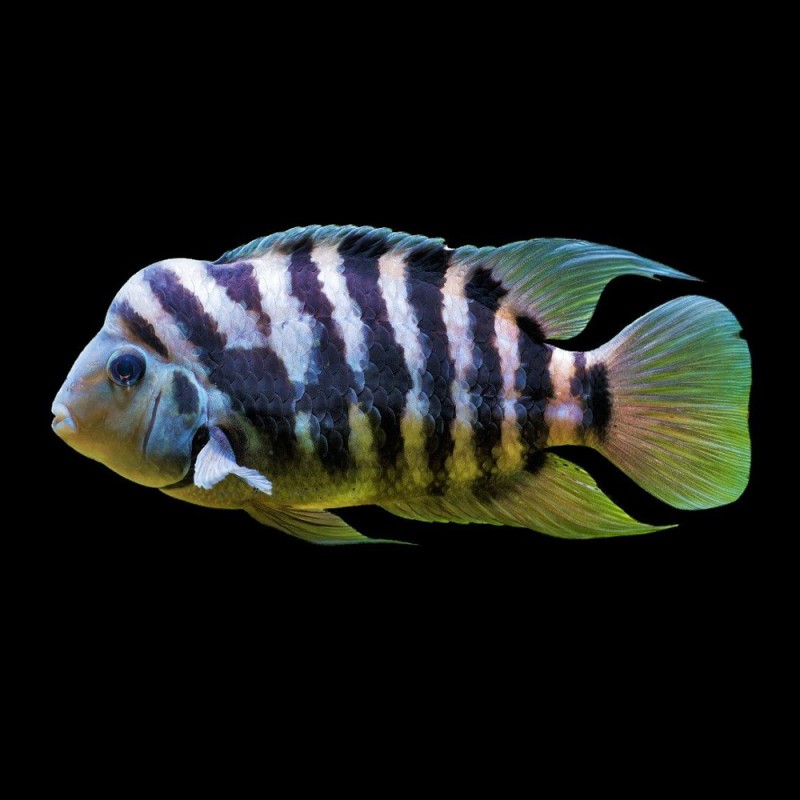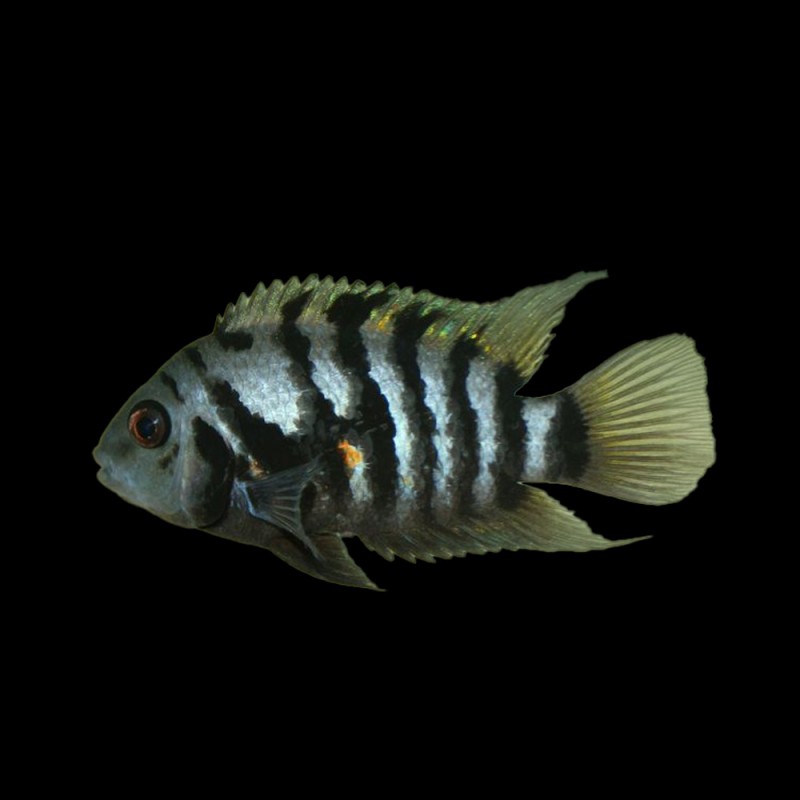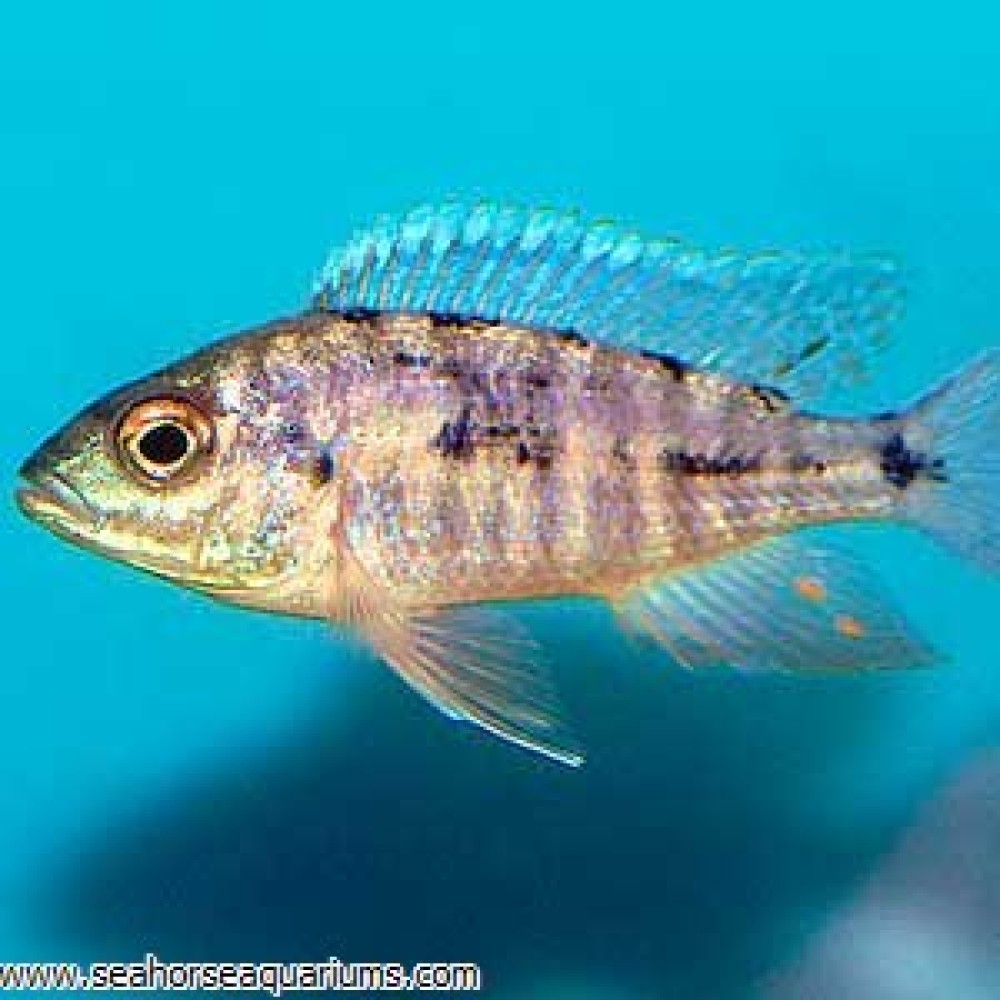
- Stock: Call To Order
- Model: -
- EAN: FT-PCB
Arrive Alive
If your fish, coral, plant, or invertebrate doesn't arrive alive and stay alive for 2 days, we'll credit your account or refund your money.
It is speculated that the OB Peacock Cichlid originated from a cross between an Aulonocara nyassae and a species of female mbuna.
This cross was initiated in captivity, and the beautiful hybrid OB Peacock was the result. Their body shape is very similar to that of the Aulonocara nyassae, but the cross between species developed a beautiful blue and orange mottled colouration.
The colorations are highly variable in this hybrid and will range from orange to yellow with different shades of blue. The patterns will also vary from being mottled to striped in nature.
The OB Peacock Cichlid does well in an aquarium that is at least 200 litres with plenty of rocks for territories and a sandy bottom. The males are usually only aggressive towards their own species unless their territory is invaded upon. Provide a ratio of 3 to 4 females to one male.
To breed the OB Peacock Cichlid, provide multiple females for the male, as it will take the stress off of the female carrying the eggs. Peacock Cichlids are mouth brooders, and the incubation is approximately three weeks, at which time the female will release the fry.
Provide the fry with newly hatched brine shrimp and finely ground flake food.
The OB Peacock should be fed a variety of both meaty and vegetable-based foods. Feed live and frozen brine shrimp along with Spirulina-based flake and pellet foods.
| File Name | Size | Link |
|---|---|---|
| 16 How to care for African Malawi Cichlids.pdf (Total downloads: 2815) | 222.89KiB | Download |
